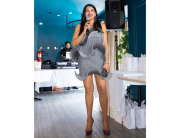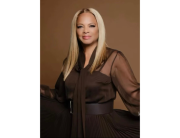The most popular and commonly available form of hair is known as premium hair.
It is sold in most beauty supply stores or online. The roots and tips of hairs are interwoven in premium hair which causes tangling. This is due to the opposing cuticle layers catching onto one another. However, as it is the most inexpensive type of hair, it is a best seller.
Premium hair comes in two types:
- Regular premium hair: generally the least expensive type of hair. The cuticles are present in different directions and the hair is prone to tangling.
- “Tangle-free” premium hair: this is obtained by chemically removing the cuticles using an acid bath. This process reduces the friction among hairs, leaving the remaining hair tangle-free. In order to give the appearance of natural healthy hair, a laminate is applied to the hair to give it a shiny and silky look.
Synthetic Fiber
Synthetic fibers are made of various different materials and contain no human hair. Synthetic fibers come in weave (weft) and single strands (bulk) for braids. They do not last as long as human hair because they can be easily damaged by friction and heat. The quality of fibers varies greatly. Depending on quality, they may never look like human hair, as they can be stiff and move differently from human hair. Synthetic fibers are much less expensive than human hair. Heating appliances such as curling irons, flat irons, and straightening combs generally should never be used on most types of synthetic hair. There are some newer versions of synthetic fibers that are more resistant, human-like fibers that can be heat processed allowing for heat styling.
Futura
Futura is a type of synthetic fiber that can withstand heat up to 400 °F (200 °C), and can actually outlast human hair. It is very similar to human hair given it is tangle-free and has a natural sheen. It can be straightened or curled, however, it takes longer to set and futura cannot be colored. It is sometimes sold as a human hair blend.
Human Hair
The human hair shaft is made up of dead, hard protein, called keratin, in three layers. The inner layer is called the medulla and may not be present. The next layer is the cortex and the outer layer is the cuticle. The cortex makes up the majority of the hair shaft. The cuticle is formed by tightly packed scales in an overlapping structure similar to roof shingles. Most hair-conditioning products attempt to affect the cuticle. There are pigment cells that are distributed throughout the cortex, giving the hair its characteristic color. The cuticle is a hard shingle-like layer of overlapping cells, some five to twelve deep, formed from dead cells that form scales that give the hair shaft strength and protect the inner structure of the hair.
The hair cuticle is the first line of defense against all forms of damage.
Photo by Force Majeure on Unsplash







Add Comment
You must be logged in to post a comment.